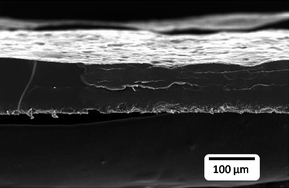Inkjet printing of self-assembling polyelectrolyte hydrogels
Abstract
Inkjet printing of alternate layers of anionic and cationic polyelectrolytes allows organized gels to form with structures similar to those made by layer-by-layer dipping methods but very much faster. Structures of gels formed using slow and fast inkjet printing systems are compared using


 Please wait while we load your content...
Please wait while we load your content...